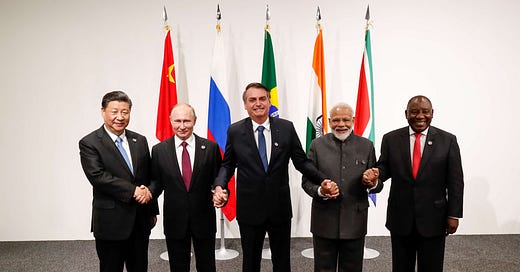Gathered in China, the BRICS No Longer Want a Unipolar World Dominated by America.
New countries, including Nigeria and Kenya, could join the BRICS club.
Behind the China-Russia duo, the BRICS want to reaffirm their desire to increase their influence at the global level. The coalition of major emerging countries - Brazil, Russia, India, China, and South Africa - no longer wants a unipolar world dominated by America in a hegemonic way, with Europe following in its wake.
The BRICS are thus preparing to welc…
Keep reading with a 7-day free trial
Subscribe to Sylvain Saurel’s Newsletter to keep reading this post and get 7 days of free access to the full post archives.




